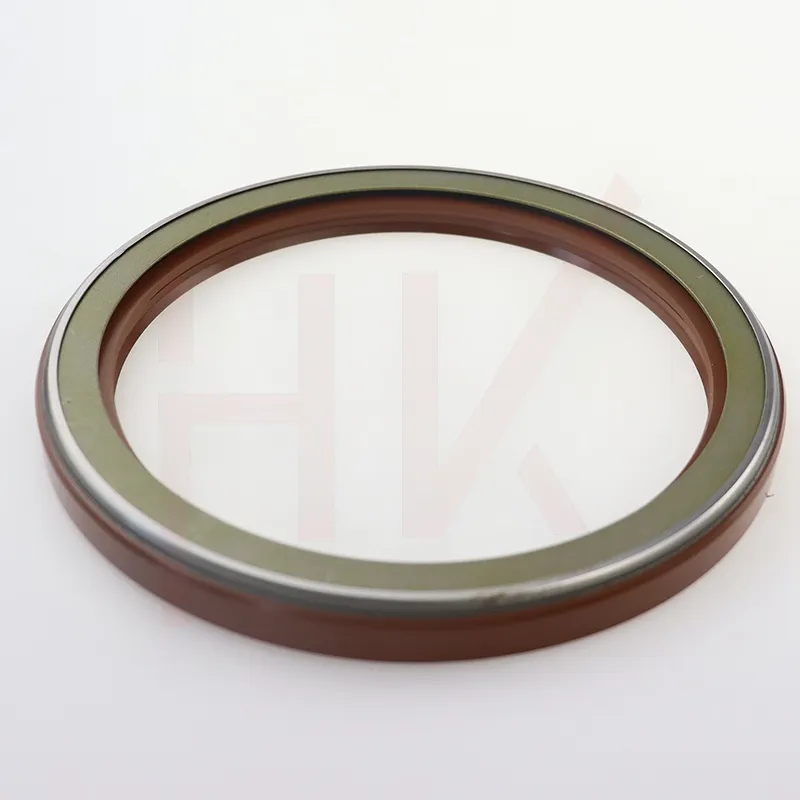10 月 . 12, 2024 02:40 Back to list
wiper ring
Understanding Wiper Rings Essential Components in Hydraulic Systems
Wiper rings, also known as wiper seals, play a crucial role in hydraulic systems by preventing external contaminants from entering sensitive machinery. These components are essential for maintaining the performance and longevity of hydraulic cylinders, pumps, and other equipment that rely on pressurized fluids to operate efficiently.
At its core, a wiper ring is a sealing element that is positioned at the outermost part of a hydraulic cylinder. Its primary function is to “wipe” off any dirt, dust, or debris that may accumulate on the piston rod as it extends and retracts. This is vital because even the smallest particle can cause significant wear and tear on seals and components within the hydraulic system, leading to decreased performance or complete failure.
Wiper rings are typically made from a variety of materials, such as polyurethane, rubber, or other elastomers, depending on the working environment and the type of hydraulic fluid used. The choice of material affects not only the wiper ring’s ability to withstand different temperatures and pressures but also its resistance to chemical aggression. For example, in a high-temperature application, a wiper ring made from heat-resistant materials may be necessary to ensure durability and effectiveness.
wiper ring

The design of wiper rings can vary widely. Some are configured with a simple lip design, while others may incorporate multiple lip configurations to enhance wiping efficiency. Advanced designs may include special geometries that create a better sealing effect or allow for greater flexibility during operation. The right design is crucial for maximizing the performance of the hydraulic system, as it directly influences how well the wiper ring can prevent contamination.
Wiper rings also undergo wear over time due to constant motion and exposure to the elements. Regular maintenance and replacement of these seals are necessary to ensure the ongoing reliability of hydraulic systems. Operators should perform routine inspections to check for signs of wear, such as cracking, tearing, or deformation. If any of these issues are detected, it’s important to replace the wiper ring promptly to avoid costly downtime and repairs.
In addition to their primary role as a protective seal, wiper rings contribute to the overall efficiency of the hydraulic system. By minimizing contamination, they help maintain optimal fluid cleanliness, which is essential for preventing pump cavitation, reducing friction, and improving the seal life. This, in turn, can lead to lower operational costs and enhanced productivity.
In conclusion, wiper rings are indispensable components in hydraulic systems, ensuring the integrity and performance of machinery that relies on pressurized fluid dynamics. By understanding their function, material composition, and the importance of maintenance, operators can ensure these vital seals perform at their best, safeguarding the longevity and efficiency of their hydraulic systems for years to come. Investing in high-quality wiper rings and adhering to maintenance best practices will yield substantial benefits in operational reliability and cost-effectiveness.
-
The Power of Advanced Sealing: High-Pressure Solutions for Modern Machinery
NewsOct.29,2024
-
Optimizing Machinery with High-Performance Oil Seals
NewsOct.29,2024
-
Maximizing Machinery Efficiency with Advanced Oil Seals
NewsOct.29,2024
-
Ensuring Equipment Longevity with Quality Oil Seals
NewsOct.29,2024
-
Enhance Equipment Performance with Quality Oil Seals
NewsOct.29,2024
-
Custom Oil Seals for Specialized Machinery Needs
NewsOct.29,2024
-
The Role of Wiper Seals in Dust Sealing and Oil Protection
NewsOct.20,2024
Products categories
















